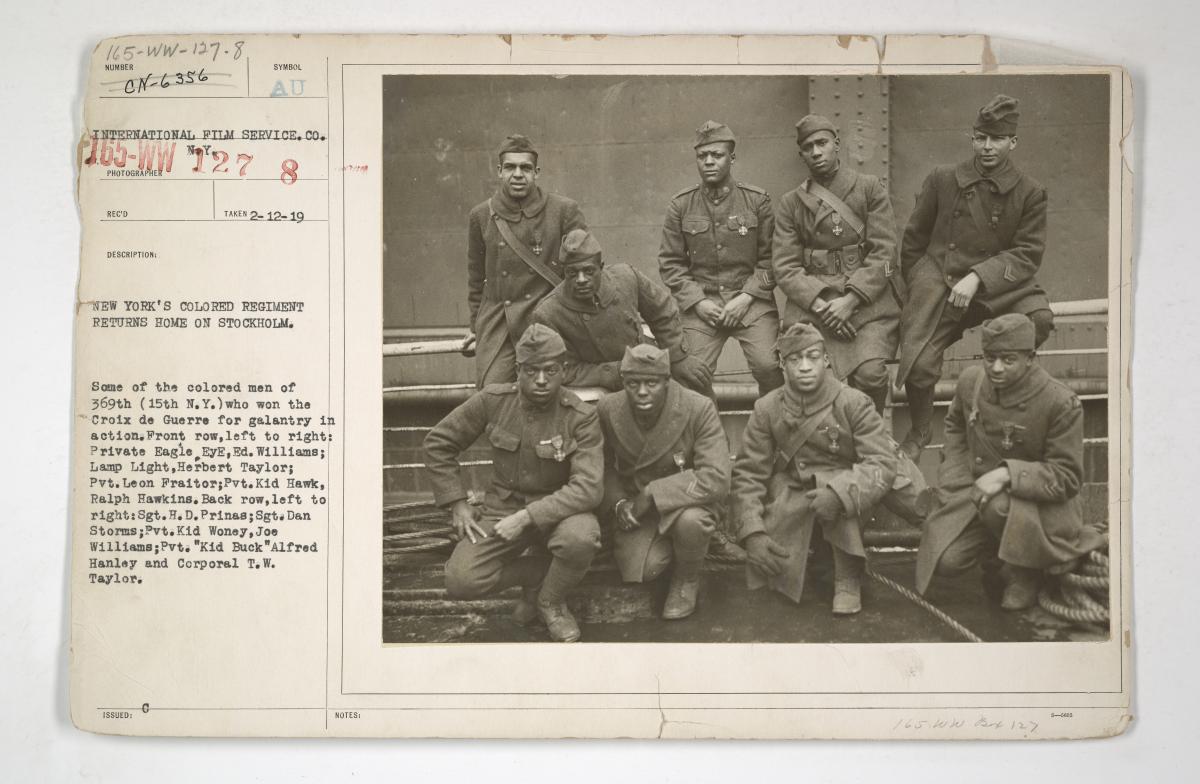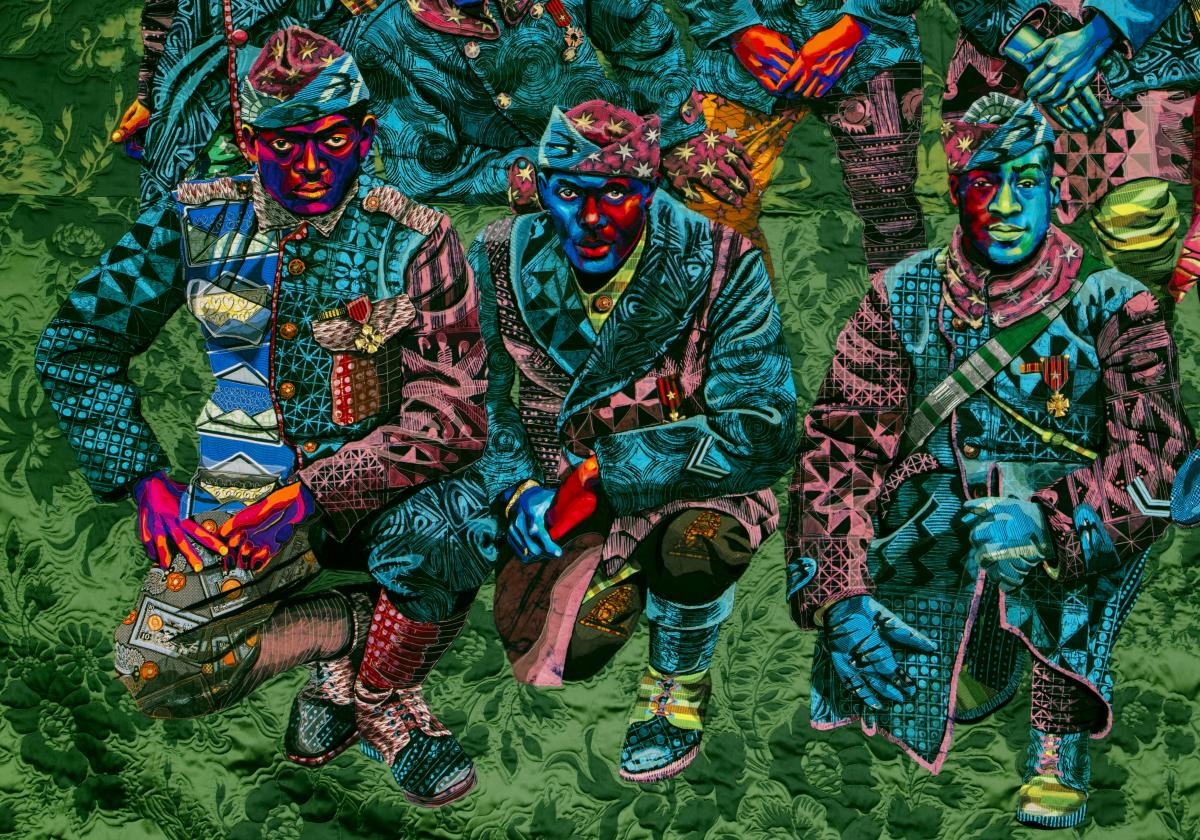“If I could ask my ancestors one question, it would be: How were they able to live in this world with grace despite the obstacles of racism and oppression? I create portraits based on vintage photographs, and when I study my subjects, I am looking for their answers.” Artist Bisa Butler explores the lives and histories of African Americans through her life-size portrait quilts, honoring both notable figures as well as bringing forgotten individuals to the forefront.
Butler learned to sew from her mother and grandmother. Although she was formally trained as a painter, her artistic focus shifted to a textile-based practice while in graduate school when she made her first portrait quilt for her ailing grandmother. Using mostly black-and-white photographs as source material, Butler brings her subjects to life with the Kool-Aid colors of the Black Power art movement intended to capture the “soul and energy” of the person she is depicting. She creates her artworks by building up layers of fabric including cotton, silk, wool, lace, and velvet, giving texture and richness to the image. Additionally she uses African and Dutch wax cloth, adire, an indigo-dyed cloth created by Yoruba women, and other traditional textiles to honor the African roots of her subjects as well as her own Ghanaian heritage. Once a portrait takes shape, she then quilts and appliqués the entire piece, creating expressive, painterly details.
Don’t Tread On Me, God Damn, Let’s Go!— The Harlem Hellfighters is Butler’s largest quilt to date, measuring approximately 11 x 13 feet, and features nine life-sized figures. Through her striking portrait, Butler seeks to bring dignity to soldiers who faced segregation, racism, and injustice once they returned home.
Butler shared her thoughts about the artwork as part of the preparation for the exhibition This Present Moment: Crafting a Better World.
The photograph used for my recent work, Harlem Hellfighters…is of people whose names are known. I have long been fascinated with the 369th Infantry Regiment, nicknamed the Harlem Hellfighters, from World War I. When these Black soldiers arrived in Europe, they were not allowed to fight alongside their white American compatriots because the US Army was segregated. Instead, the Black soldiers were assigned to fight with the French. Despite this effrontery and indignity, the Hellfighters fought with ferocity and gallantry, and they thought that their sacrifice and extraordinary battlefield performance would make America see them as equals and as patriots.Some of the Hellfighters lived to be old men and some died young; yet in this moment, they were all triumphant. Whatever happened in their lives afterward cannot erase the fact that they succeeded in proving to themselves and to the world that they were indeed men of honor.
I look to their example to see for myself that the triumphs we experience today will outlast tyrants and that nothing can ever erase them—not time, not death. These protectors of our nation fought and put their very bodies and their lives on the line. My work is to continue to lift them up in history so they can be seen in public spaces, where their heroic sacrifices become part of the American quest to fight against oppression and for freedom.
“The piece to me is absolutely about building a better world: the story of the Harlem Hellfighters is not well known and should be,” said Nora Atkinson, the Fleur and Charles Bresler Curator-in-Charge for SAAM’s Renwick Gallery. Their gallantry and sacrifices were finally recognized by the U.S. government over 89 years later. The commitment of these individuals to their country, despite the fact that it didn’t always live up to its values is inspiring. You can’t build a better world without acknowledging the things that need fixing.”
To learn more about Bisa Butler, watch an archived lecture with the artist. Read more about the Harlem Hellfighters at the National Museum of African American History and Culture and in the Smithsonian Magazine.
This Present Moment: Crafting a Better World marks the 50th anniversary of SAAM’s Renwick Gallery by celebrating the dynamic landscape of American craft. The exhibition explores how artists—including Black, Latinx, Asian American, LGBTQ+, Indigenous and women artists—have crafted spaces for daydreaming, stories of persistence, models of resilience, and methods of activism that resonate today. In order to craft a better world, it must first be imagined. This story is part of a series that takes a closer look at selected artists and artworks with material drawn from exhibition texts, the catalogue, and artists' reflections.





















